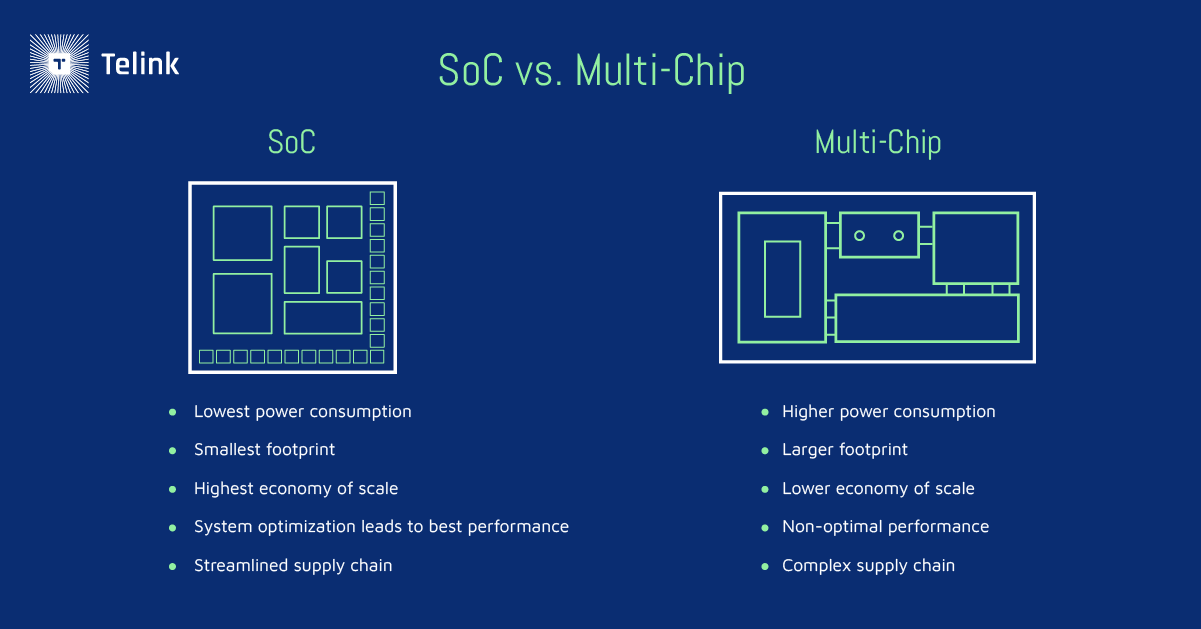



PLEASE ROTATE ME


Telink Staff
July 19, 2022
Technology

To create optimized technology for the Internet of Things (IoT), product developers should consider integrated circuits that offer affordability and efficiency.
System-on-chip (SoC), system-in-package (SiP), multi-chip modules (MCM), and discrete chips on the PCB — which circuit design should you use when developing a cutting-edge, reliable IoT device? Each system implementation has specific capabilities, offering pros and cons depending on your priorities. However, if you’re looking to develop a product optimized for IoT use cases, a SoC approach is your best bet.
SoC offers a level of flexibility, customization, and compartmentalization that traditional implementations lack. And while SiP, MCM, and discrete-chips implementations can handle complex operational demands well, SoC is designed to do so while saving energy and money especially when the end devices are deployed in large scale.
By looking at the differences between SoC and more traditional system structures, it’s clear why SoC is an ideal IC solution for products that demand IoT compatibility.

Short for “system-on-chip,” SoC is a type of integrated circuit that incorporates most of an electronic device’s hardware and software components on a single semiconductor substrate to reduce space and increase efficiency. As an example, SoC may include:
Because SoCs aren’t subject to specific developmental standards, they can be tailored to fit applications with their own list of requirements.

Today, IoT developers are looking for high functionality and performance at an affordable price point. To this end, the SoC approach offers a few key advantages over the other less integrated options. For instance, the structural nature of multi-chip implementations require extensive supplier sourcing, making manufacturing costs higher than those for SoCs. Multi-chip options also demand more time during the research and development stage to ensure that all components are appropriately arranged to work in unison, further extending a product’s time to market. On the other hand, SoC-based devices are much easier to produce from start to finish since they require only one chip to work with, considerably reducing a product’s time to market and preserving battery life that would otherwise be drained by additional communication between several ICs.
Ultimately, SoCs are designed to function holistically, allowing system processes to work better, faster, and with minimal latency, making them ideal for IoT applications that depend on achieving the performance in the most efficient way.
Our world runs on progress, which is why Telink strives to take circuit design to the next level. Telink pioneered the standard for IoT SoCs, launching the first all-in-one SoC in 2016: the TLSR8269. Today, Telink’s line of multi-protocol IoT SoCs has expanded to include the TLSR921x, TLSR827x, and TLSR825x series for affordable, up-to-date, low-energy wireless connectivity. The TLSR921x offers a RISC-V MCU to create an IoT solution fit for any product development project that aims to push the boundaries of technology with the thriving open source ISA.
Partnering with Telink for your product development goals means investing in the future of IoT. Are you ready to take the next step?
Contact us today or please visit the Telink Wiki for additional product information.